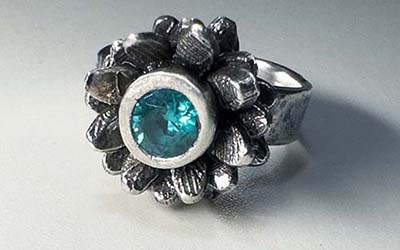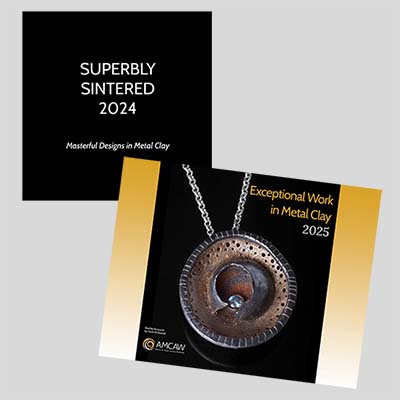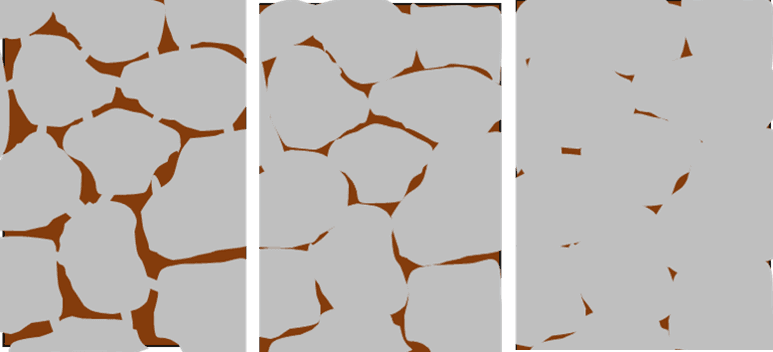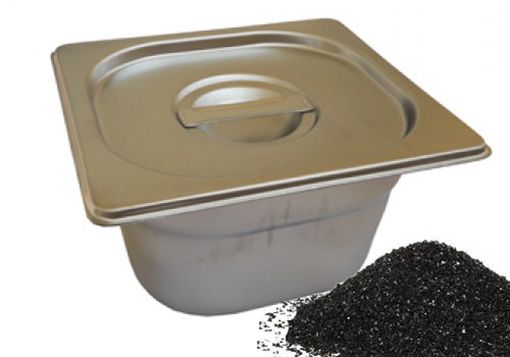Two-Phase Firing Prevents Oxidation Of Alloys And Base Metal Clays
Clays such as .925 sterling, bronze, steel, and all other base clay variations are prone to oxidation, which prevents the metal particles from bonding. Instead, these alloys must be fired surrounded by granulated carbon, which reduces the amount of oxygen in the kiln and facilitates sintering.
Because the flame of a torch consumes most of the oxygen in its immediate area, small pieces of pure copper and some bronzes can be torch fired (while exposed to air for a very short time) before they start to oxidize internally. However when they are, the crust of surface oxidation that forms may flake off, taking with it delicate texture and details. Steel cannot be torch fired for any length of time.
Therefore, base metals are most commonly fired in a stainless steel or ceramic fiber container buried in carbon, which reduces the amount of oxygen and inhibits oxidation. Because it is important that the binder burns off completely before sintering starts, a two-phase process ensures a successful outcome:
- The first phase is fired in air so the binder can burn out, and
- the second phase is fired in carbon so the particles can bond together.
This is achieved by making sure that the ramping time (the time it takes for the kiln to reach the desired sintering temperature) is at least 45-60 minutes. The hold time after ramping may differ from manufacturer to manufacturer and from exact clay body to clay body. With differences between every kiln manufactured (even those manufactured by the same company), a test firing is always advisable.















